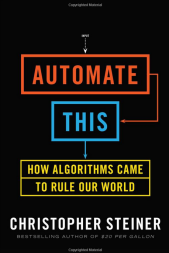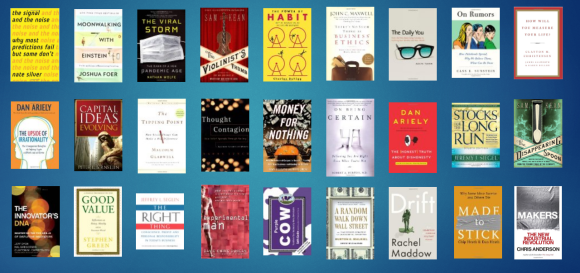Knowledge is a strange beast. On a lot of topics, we start with the certainty of ignorance. Usually our opinions are point estimates, in that we believe with certainty that something is true or that it is false. I wrote about that in an earlier blog post. When consumed correctly, knowledge should disabuse us of our orthodoxy and provide us with an estimate and a range of uncertainty around it. Most answers should become – “it depends”. As Nate Silver quotes in his book from the Danish mathematician Piet Hein, we learn to “err and err and err again, but less and less and less.”
As I was driving back from school today after completing the penultimate term in the WEMBA program, these thoughts were running through my mind. It was a fascinating term where several new topics were introduced and uncertainties that exist in those worlds made known to us. Something else about knowledge is that once you know, it is hard to un-know. Now I know that statistically speaking, there is very little persistent skill involved in mutual fund returns. Or that an average investor’s expectation of returns in the market is zero. But I’ve heard of so many stories to the contrary. In a frequentist world where we base our opinions around the statistics we observe, it is hard to see how intuition can so often fail us. Though we’re built Bayesian in how our brain works and interacts with the world, somehow we find it hard to use it in certain basic aspects of our life. As you can see, life has been irrevocably altered by a term-long brainwashing by Chris Geczy in our investment management class. I’ve seen my share of smart people and great professors, and he ranks right up there. I’ve also seen my share of difficult courses, and I dread to take the take-home open-book exam that I need to turn in in a week. But man, what a ride it was!
Another finance class this term was on Capital Markets. We trudged through the minutiae of reverse repos, mortgage backed securities and CPR and PSAs, PAC bonds, soft bullets, STRIPs, reverse triangular mergers, stalking horse bidders and a host of other terms that I had never heard before in my life. It was fascinating to see how with the right mathematical tools and creative brains, any asset could be securitized, tranched and sold. And as our recent market meltdown showed us, when this is done without adequate thought to risk and correlations among assets, it can spell disaster. I didn’t have the chance to do Advanced Corporate Finance this term with Bilge Yilmaz, but between Bilge, Chris and the Capital Markets professor David Musto, it looked like we had some of the best experts in their respective fields teaching us.
This was one half of my term. Despite the principles of uncertainty and risk, finance usually involves certainty – in the sense that once you pick a distribution for your model and your data, you are expected to arrive at a consistent set of parameters to define that model – the mean, variance and other moments. So even within that uncertainty, there is a certain finality of characterizing the process accurately in the face of available data.
The other half of the term was almost at the other end of the spectrum. It was a process of successive refinement much like the images we used to download through slow internet connections where it showed us a pixelated low-resolution version first while it downloaded more of the sub-band coefficients and made the picture clearer and clearer. We started with a vague notion of what Strategic Brand Management meant. We spent several sessions with Prof. Barbara Kahn refining those views until a clearer (hopefully) picture emerged of what it meant and how we could use it to analyze the brand value of companies like Netflix, or Facebook. Or Marlboro. Or even countries like Rwanda. We learnt how Interbrand crunched numbers to come up with brand value. And the potential loopholes and caveats in that process. We also had an interesting Market Research class that some of us took in the East Coast with Prof. Josh Eliashberg where we learnt about survey design and analysis. We took baby steps towards defining a problem, designing a survey to find answers, collecting and analyzing responses and presenting insights – another series of successive refinements that told us a bit more about the world that we sought to learn more about.
I also did an independent study project with Josh Eliashberg and David Bell around measuring the success of online recommendation engines and testing for how certain sets of changes to recommendations could change conversion rates for those recommendations. Work’s still in progress, but it provided an amazing exposure to the vast body of literature on this topic and its findings, that has over the years found its way into the e-tailer sites that we visit today,
So where does that leave us? We know a bit more about the business world around us, and a bit more about what the assumptions are that are behind those conclusions. The key, as we learnt in the investment management class, is out of sample validity of those views. If our views about the world consistently fail in out-of-sample tests, then we need to have the maturity and humility to alter those views in the face of evidence. Whether it be about our right to carry around assault weapons in the second largest democracy, or it is about our continued apathy towards rape in the largest democracy in the world – two sets of dastardly events that have shocked the two nations. Yet somehow, knowledge does not seem to make us less certain. We seem to pick and choose what we want to hear. Where we get our news from. Who we include in our echo chambers of advice and criticism.
And this is where education still has some ways to go. Unless the modern education system can teach us to understand that the more we know, the more we know that there is so much more to know, our lives in schools were spent in vain.

